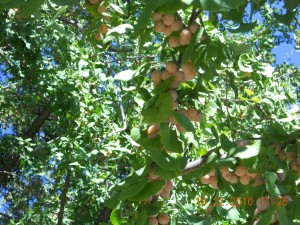Is the worst of winter behind us? Winter jasmine (Jasminum nudiflorum) is often confused with forsythia shrubs which bloom 3-4 weeks later in the spring. This hardy winter blooming vine from China frequently blooms in late February and March when daytime temperatures climb into the mid-50s for a week or more. Evening chilling temps down into the […]
Archive for the ‘winter hardiness’ Category
Opening Show in February- The Witchhazels
First, not to confuse you, our North American native witchhazel (Hamamelis virginiana) blooms in the fall. Our native vernal witchhazel (H. vernalis) has been flowering for the past few weeks. In February, the showiest witchhazels are opening now – species from China, Korea and Japan. Two of the very best are a Chinese species/cultivar called […]
The Other Lenten Roses
In addition to the popular Oriental hellebore (H. x orientalis), four other species are hardy in the Southern Appalachian region (USDA hardiness zones 6 and 7). Christmas rose (H. niger) is the first lenten rose to bloom, often 4-6 weeks earlier if mild December weather permits. The 3 ½- inch flowers are large and showy, […]
Planting Trees for Future Generations
Oaks, beeches, hickories, ginkgoes, bald cypresses, redwoods, chestnuts and others are trees that future generations inherit from previous generations. In human terms, it takes a lifetime to grow an acorn into a mighty oak. Many tree species live hundreds of years, often asking little and contributing much beauty, summer cooling shade, winter heating comfort as windbreaks, and a […]
Hardy Dwarf Deodara Cedars
Over the past ten years, deodara cedar (Cedrus deodara) has carved its niche into Southern Appalachian gardens (USDA zones 6 and 7). Three zone 6 hardy dwarf cultivars, ‘Glacier Blue’, ‘Devinely Blue’, and ‘Feelin Blue’, fit today’s smaller garden space better than most tree forms of deodara cedar that typically reach 70-80 feet in height. […]
Zones 6 Winter Hardy Encore Azaleas™
‘Autumn Ruby’ Encore azalea in April 2009 Photo credit: Dr. Alan Windham, Extension Plant Pathologist, University of Tennessee Encore Azaleas™ bloom twice: in the spring and from late summer into the fall season.Ten varieties consistently exhibited cold hardiness throughout zones 6-a and 6-b: Autumn Amethyst, Autumn Carnation, Autumn Cheer, Autumn Lilac, Autumn Royalty, Autumn Ruby, […]
Culver’s Root (Veronicastrum)
Midwest native Culver’s root (Veronicastrum virginicum) starts the summer flowering season in my perennial garden. It naturally grows in open woods and meadows and thrives in fertile to moist soils. However, this deep rooted plant hasn’t complain about the current dry period in the Southern Appalachian region (USDA zones 6-7). Be aware that culver’s root […]
Agapanthus- Hardiness Issues
Lovely agapanthus (Lily of the Nile) is native to South Africa and is not reliably hardy in the Southern Appalachian region (zones 6 – 7). Many small tubular flowers comprise each ball -shaped (umbel) flower cluster. Tall sturdy floral scapes rise 1 to 4 feet in height, blooming from late spring into late summer depending […]

 Posted in
Posted in 
 Tags:
Tags: 

